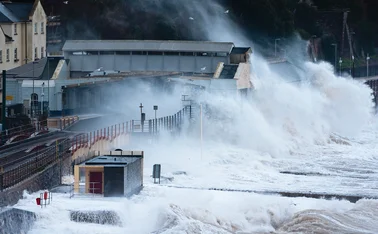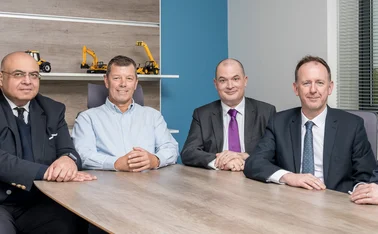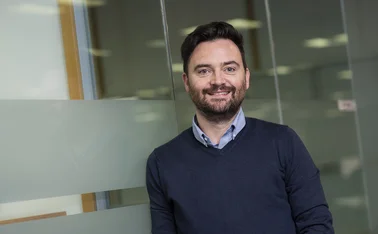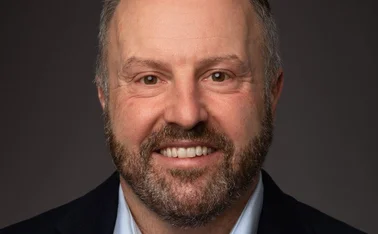
BIA Countdown: 20 years of claims

As part of Post’s countdown to the 20th anniversary of the British Insurance Awards in July, we spoke to claims experts at firms that have experienced wins over the years, asking them how the industry has changed since the first BIAs in 1994.
How has claims management changed over the past 20 years?
Ian Sutcliffe, head of business development, GAB Robins: A significant change has been how claims services are purchased. Historically, claims services were procured on a local basis through the handling individual or office. But as insurers have become larger and more complex, their approach to procuring claims services has become centralised and commoditised, leading to high volume panel or outsourcing arrangements. We are seeing relationships regaining importance in the intermediated commercial and specialist lines, with broker nominations determining allocation of some assignments.
Mark Henderson, director for business development, Cunningham Lindsey: Service level expectations have escalated over the past 20 years, and they continue to do so. Today, we really have to get it right first time - even in a large scale event such as last storms. This means we must deliver a very personal service at every level and for every line of work.
Karl Parr, head of claims technical excellence and development, Ageas: In a
word - massively. The emphasis has changed completely, from a purely technical viewpoint to one that focuses on the customer. The customer experience is what sets one insurer apart from another, particularly in the commoditised end of the market. This focus on the customer has been supported by the use of technology to improve communication and speed up claims response. It has also created more scope for insurers to provide the personal touch.
Ian Muress, chief executive, Europe, Middle East, Africa & Asia Pacific, Crawford & Company: In many ways it hasn’t fundamentally changed - we continue to focus on helping people at a time of need. That said, the nature of risk has changed dramatically in recent years and we find ourselves dealing with more complex claims. As a result, in today’s world, I would say ‘the generalist’ has increasingly been replaced by adjusting specialists who command respect from the many key stakeholders who come together in the event of large insurance claims.
How have the challenges facing the sector changed?
Sutcliffe: Our single biggest challenge has been to maintain the resource necessary to handle weather-related and other surge events during times when there are low claims frequencies. We have also seen our competitor environment change significantly, with the rise of validation and fulfillment services provided by many not previously in the insurance sector.
Henderson: The biggest challenge is to deliver an excellent customer service at the best possible price. Technology is playing a huge role in enabling faster and smarter ways of managing communications and reducing administration. We’re always looking for innovative ways to improve the process.
Parr: Ensuring that customers are at the centre of our processes has been key. Also, due to the reduced returns from underwriting and investment, the focus has changed from reducing overall expense to fairly reducing indemnity spend. There is also the ever present issue of fraud, which has become endemic in some lines, with organised fraudsters becoming increasingly sophisticated.
Muress: A real challenge is providing a better quality service for less money – in real terms. We can never be immune from economic pressure, and the key to meeting this challenge comes from deploying innovative new ways of working.
What have been the high points of the past 20 years?
Sutcliffe: Helping our clients and their customers when it matters is the most satisfying aspect of our work. Receiving strong commendations from customers when we have been able to help them through a very traumatic time makes all the hard work worthwhile.
Henderson: Growing the business from a UK loss adjusting company to a worldwide claims management and loss adjusting business.
Parr: The times in which we have stepped up to the mark to support our customers during severe weather events feature are high points. The freeze of 2010/2011 and floods of 2007 spring to mind, as well as this winter’s events. The Woolf and Jackson Reforms - and the implementation of the Personal Injury Claims Portal - were also significant developments. We have seriously ramped up our fight against fraud, with the introduction of the Insurance Fraud Bureau and the Insurance Fraud Enforcement Department.
Muress: Unquestionably, having responsibility for more than 3000 claims professionals around the world who make such an impact in the markets they serve. I am always proud to have played a part in helping people and businesses return to normal after catastrophic events. I have been involved in many major claim events including the storm of 1987 and the Lockerbie terrorist attack of 1988, and more recently, the global natural catastrophes that have dominated the news around the world.
What did you win/get shortlisted for and why?
Sutcliffe: In 2009 we won the Major Loss Award for our response to the Cockermouth floods. This year, we have been shortlisted for the Major Loss Award again, for our handling of a multimillion-pound university fire claim affecting academic and research centres. We are also up for the Technology Award for our claims insight management information suite.
Henderson: We’re very proud to have won 10 and to have been shortlisted for 17 British Insurance Awards in the past 20 years. Our wins include two for Loss Adjuster of the Year, three in the Claims/Loss Adjusting Initiative category, three for Major Loss and two Technology awards. We’re committed to a substantial and ongoing service improvement research and development programme. This enables us to constantly come up with new, inspired and efficient claims handling solutions.
Parr: We won 2010 Claims Initiative of the Year for our innovative approach to using technology and working with suppliers to improve the customer journey, while improving efficiencies.
Muress: Crawford was a finalist in 2004 and 2005 for its subsidence claims service. The investment made in computer-based modelling software to estimate the influence of varying soils, trees and changing climatic condition in minutes meant we were able to reduce the price of on-site investigations. That innovation continues today as we explore new technology solutions to meet today’s claims needs.
What have been the most notable claims events/trends of the past 20 years?
Sutcliffe: If I could name three notable claims events, they would be: the explosion at Buncefield in December 2005, which measured 2.4 on the Richter Scale and caused 43 injuries in addition to [affecting] countless properties. The terminal was the fifth largest oil storage depot in the UK with a capacity of 60m gallons of fuel; the unprecedented 2007 floods affecting over 50 000 properties across the UK and costing the insurance industry around £6bn; and the 2011 riots, which caused widespread damage to homes and businesses, with insurers paying out approximately £200m in claims.
Henderson: The most notable claims events have largely been weather‑related. The 2007 floods and the weather conditions of late 2013 and early 2014 are examples. The London riots were also a significant claims event.
Parr: Weather-related claims events are increasing in severity and scale. The floods in 2007 and those at the start of this year caused wide-scale disruption and really tested the mettle of the insurance industry. The emergence of ‘crash for cash’ and spurious whiplash claims could also be considered a notable trend.
Muress: Intangible risks will be high on the agenda in the coming years. The most recent example might be around the threat from cyber attack and how businesses are protected from its impact. The change in weather patterns also appears to mean flooding will remain high on the agenda around the world and it cannot be long before the UK looks to its European and US colleagues for a different approach to flood claims handling.
How has claims fraud changed since the BIAs began in 1995?
Sutcliffe: Claims fraud has always been part of our industry, but over the past 20 years fraudsters have become more sophisticated. As the level of fraud has grown, we have applied more resource and a suite of new techniques and software and we are identifying more fraudulent cases.
Henderson: It’s changed considerably in the past 20 years as the profile of counter-fraud activity has grown in proportion to the level of sophistication used to commit it and tackle it. Cunningham Lindsey was the first loss adjusting organisation to set up a dedicated fraud detection team of five people in 1997 - it now comprises some 90 resources and has saved clients £140m over the last three years. The industry has also taken the responsibility to reduce financial crime seriously, investing in initiatives such as the Insurance Fraud Bureau, Ifed and the Insurance Fraud Register.
Parr: Media reporting on ‘crash for cash’ scams is helping raise awareness among consumers about the impact fraudulent activity has on costs to the insurance industry and ultimately how this affects premiums. Of course, publicity of the repercussions of fraudulent activity also acts as a powerful deterrent to those considering perpetrating such crimes.
Muress: Fraudsters are becoming ever more sophisticated and the industry as a whole needs to work together to combat this threat. We tend to think of fraud as individuals inflating the cost of a household or motor claim, but the reality is that the risks associated with IT and cyber could have catastrophic effects on individuals and business.
What do you predict the big claims issues of the next 20 years will be?
Sutcliffe: The single biggest issue affecting claims in the next 20 years will be how the industry responds to the increasingly frequent and varied surge events that we are now experiencing. In the last five years we have seen storms, floods, riots, earthquakes and a big freeze. We can also expect the type of claims to evolve as technology becomes more integrated in our daily lives.
Henderson: Customer expectations across all markets are increasing all the time - and in insurance it’s no different. Our client’s customers will expect the insurance industry to keep pace and our challenge will be to find ever more innovative and cost efficient solutions.
Parr: Customers will, quite rightly, demand better service, better cover, additional contact channels and more choice about how their claim is settled. As severe weather events increase, insurers will need to cope with surges more effectively.
Muress: An issue that has been debated at length and that still needs our focus is the ‘war on talent’ - the claims sector needs highly skilled people. We also feel third-party administration will continue to grow over the coming years and hand-in-hand with that will come an increased need for up-to-date and meaningful data. Investment in technology, mobile data and analytics to provide our clients with meaningful management information is a key part of our strategy.
This article was published in the 26 June edition of Post magazine.
Only users who have a paid subscription or are part of a corporate subscription are able to print or copy content.
To access these options, along with all other subscription benefits, please contact info@postonline.co.uk or view our subscription options here: http://subscriptions.postonline.co.uk/subscribe
You are currently unable to print this content. Please contact info@postonline.co.uk to find out more.
You are currently unable to copy this content. Please contact info@postonline.co.uk to find out more.
Copyright Infopro Digital Limited. All rights reserved.
You may share this content using our article tools. Printing this content is for the sole use of the Authorised User (named subscriber), as outlined in our terms and conditions - https://www.infopro-insight.com/terms-conditions/insight-subscriptions/
If you would like to purchase additional rights please email info@postonline.co.uk
Copyright Infopro Digital Limited. All rights reserved.
You may share this content using our article tools. Copying this content is for the sole use of the Authorised User (named subscriber), as outlined in our terms and conditions - https://www.infopro-insight.com/terms-conditions/insight-subscriptions/
If you would like to purchase additional rights please email info@postonline.co.uk
Most read
- Esure offers customers six-months free cover for latest tech glitch
- LV’s Mike Crane leaves insurer
- Big Interview: Jason Storah, Aviva







